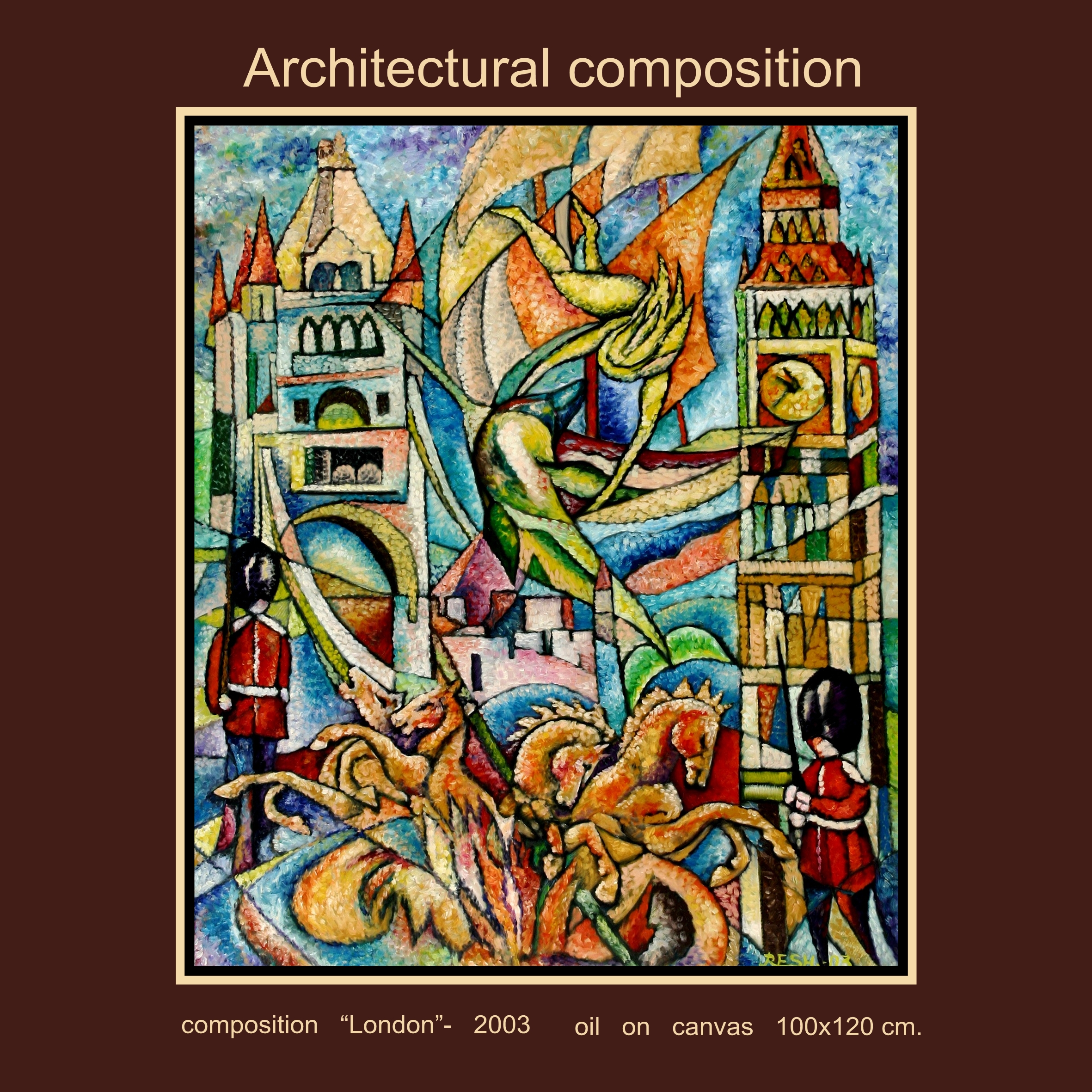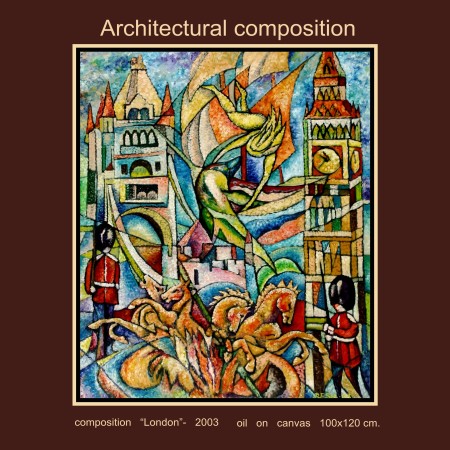ABSTRACT ART. HISTORY OF DEVELOPMENT.
Abstracting tendency to act in the history of art forever. It is characteristic that in ancient times – in the art of stone century-there were two poles, two very opposite kind of art – “a natural layout of” the beast (to fine period), “natural style” art of primitive hunters and ultimately geometrized symbols, geometric ornamentation guns and the human body.
The subsequent history of art then go these extremes, working closely, the cost again. Geometric art style of the Ancient World is the first comprehensive artistic style, which is dominated by an abstract principle. However, as an artistic movement in the visual arts, abstraction began to take shape only in the XIX-XX centuries. This is due, on the one hand, strengthening of analytical trends of the art thinking, and with another – the artist’s alienation from the surrounding reality.
The centuries-old work of art masters of the form has led to the need to improve the quality individually: visual design, texture and color. After the Impressionist and rapid development, disparate currents of post-impressionism artistic synthesis has become unattainable. But the reality was that many artists in general lost all interest in her image.
In 1917, French postimpressionist painter A. Lot said: “Abstraktivizm realistic”, implying that abstract art is honest, truthful reflects the artist’s attitude to life around him than salon naturalistic painting of the time. In 1931, the eminent German artist, theorist, philosopher and educator P. Klee wrote: “The worse the world becomes, the more abstract it becomes art.” A famous Picasso claimed that “there is no abstract art” that any art, in one form or another, in one way or another, reflect reality.
This mechanism is shaped in the different kinds of art in its own way, he has always acted, and because all the arts in one degree or another, are representational and expressive. Abstract artist in the beginning of XX. in essence nothing opened, and nihilistic, scandalous declaration of some of them partly reflects the romance of time, partly were just a bluff, calculated to attract attention.
As early as 1883 the French artist A. Alphonse pointed to the exhibition of paintings “The girls in the snow,” which is a stretched on a frame sheet of plain white paper. Of course, you can find this picture of a joke by presenting her a very specific image of white snow covering the figures of girls. But in the years 1892-1893. A. Van de Velde has created his software abstract drawings and watercolors that reflect the natural evolution of formal searches in the art nouveau period.
Formation of the Art Nouveau in architecture and the decorative arts, plastic experiments later J. Seurat contributed to the emergence of abstract compositions Belgians Van de Velde, T. Van Dusbyurga, P. Mondrian. In 1908 he published a book by Worringer, “Abstract and feeling”, who played the role of the first manifesto abstraktivizma. This artistic movement emerged regularly and on time as a result of the crisis of Western European art, its intense and excessive formalization of analytic, rational. Therefore, the claim of the Russian revolutionary avant-garde creators, especially Malevich and Kandinsky, to the role of the “fathers of abstract art” unfounded. It is also significant that Kandinsky, origin and spiritual temperament, was more European than Russian.
In abstraktivizme XX century. there are two main trends: the rationalist – “line” Van Dusbyurga, Mondrian, and later, Malevich and emotional, expressive – “Kandinsky line.” The first is called constructive geometrism (Malevich – Suprematism), the second – abstract expressionism. With the first passage is closely connected later, synthetic Cubism, Orphism R. Delaunay, Kupka F., F. Picabia, the work of artists of the “Golden Section”, as well as A. Ozanfana purism and Le Corbusier, B. Nicholson.
Elements of abstract are present in the works of outstanding artists: Matisse, Klee, P., F. Leger, Picasso, at the surrealists H. Arp, Miro, A. Masson, Rothko, H. Hartung, sculptors H. Moore and Alexander Calder, painters G. Sutherland, N. de Stael, A. von Jawlensky and many others. The method of abstraction used in Dada, Pop Art, Op-art, and other avant-garde currents.
Yet the differences between the two main currents of abstract art are fundamental and essential. Artists geometric abstraktivizma concretize his intuitions about the macrocosm, the absolute value of creativity in simple geometric forms.
Abstract Expressionism, by contrast, consistently diverted from concrete experiences for expression – expression of its internal state. Representatives of the first course of “go down” and “build”, the second – “experience” and move “from the bottom up.” If the latter are related to the traditions of expressionism in art (as evidenced by the name of the course), the geometric course of radical artists are software and are formalists like the result, the ultimate expression of the ideas of symbolism in art. In this regard, the very name “Suprematism” (from the Latin. Supremus – the highest) and the fact that the famous “Black Square” by Kazimir Malevich, shown at the exhibition in 1915, it was perceived as a symbol of “the end of painting.”
There is a third stream, marked perhaps as a special spirituality, where their word could say Russian artists. This “third way to irrelevance” M. Larionov, MV Matyushina, Pavel Filonov.
A special place is the school VS Sterligov and contrasts them Suprematism original “dome-cup” system forming. However, in Western Europe in the late 1920s. abstraktivizm lost its importance, giving way to the other currents, especially surrealism. “Purely abstract” art is elitist and little clear to the viewer. Even though the refinement of rhythm and plastic forms, exquisite color combinations of many paintings of artists like abstraktivistov art can only cause aesthetic experience and too vague subjective associations.
To complete the expression of artistic and imaginative content of the fine arts requires more concrete forms, more unambiguous reading of the image, which was achieved in other, even extremely modernist trends. In 1949 he published a book of French critic M. Seyfora “Abstract art, its origins and the first masters”, but it was greeted in France cool. In the Soviet Union the abstract, and along with all the “left” art is simply forbidden.
The sudden recognition of abstract expressionism called tashizma found in the 1950s. in the USA. But there he immediately bought a commercial, scandalous in the face of George. Pollock and Andy Warhol works linked up with pop art and primitive trade advertising. In the “American version of” aesthetics abstraktivizma was nullified.
The highest spiritual sense abstract art is a manifestation of the divine, the absolute beginning of creativity. After abstraction Dreaming infinity end in itself, it is a denial of the visible world. However, in the material world, the artist associated with the other circumstances. In this respect, interesting reflections of the artist and theoretician VA Tabor that naturalism and abstraktivizm most consistently embody concrete and abstract, is “inferior art” as mutually exclusive extremes. By contrast, the interaction of concrete and abstract in one work of art, as it has always been in the classics, works by Giotto, Masaccio, Michelangelo and Rembrandt – “the most interesting thing in art, because all the time you see how the abstract becomes concrete and in particular has based on the abstract. ”
Emasculation of dialectics as the one and the other side substitutes artistic aesthetic activities such as collecting colored pebbles on the beach, or the arrangement of furniture in the room. Tabor concludes that “modern abstraktivizm be accused of naturalism.” For artistic imagination based primarily on the fact that in specific, individual forms with their imperfection one can see higher abstract (Divine) started, and given to him to understand abstract symbols specifically detail.
Artistic image as truth, there is somewhere in the middle … In the Soviet Union, during the era of ideological pressure “socialist realism”, all abstract art, regardless of its true value, seemed unusually attractive, was the personification of spiritual freedom and was seen as a protest against the existing state system. Later it turned out that it is only one of the currents of the artistic avant-garde, and not always the most advanced. Abstract art is also called “non-figurative” or “nonfigurativnym” (from the Latin. Non – “no” and figura – “look, the image, the image”). However, with the terminological point of view, this title less successful, since it is unclear what kind of “figures” are meant. The term “figurative art” is also vulnerable because in fact any art, including solubility in the abstract, always subject, as an expression of a very specific artistic idea, t. E. Has its own subject. In this sense, it would be better named “objectless art.” Geometric abstraktivizm for its conciseness, “frugality” forms of expression are sometimes called “primary structures”, or minimalism.

